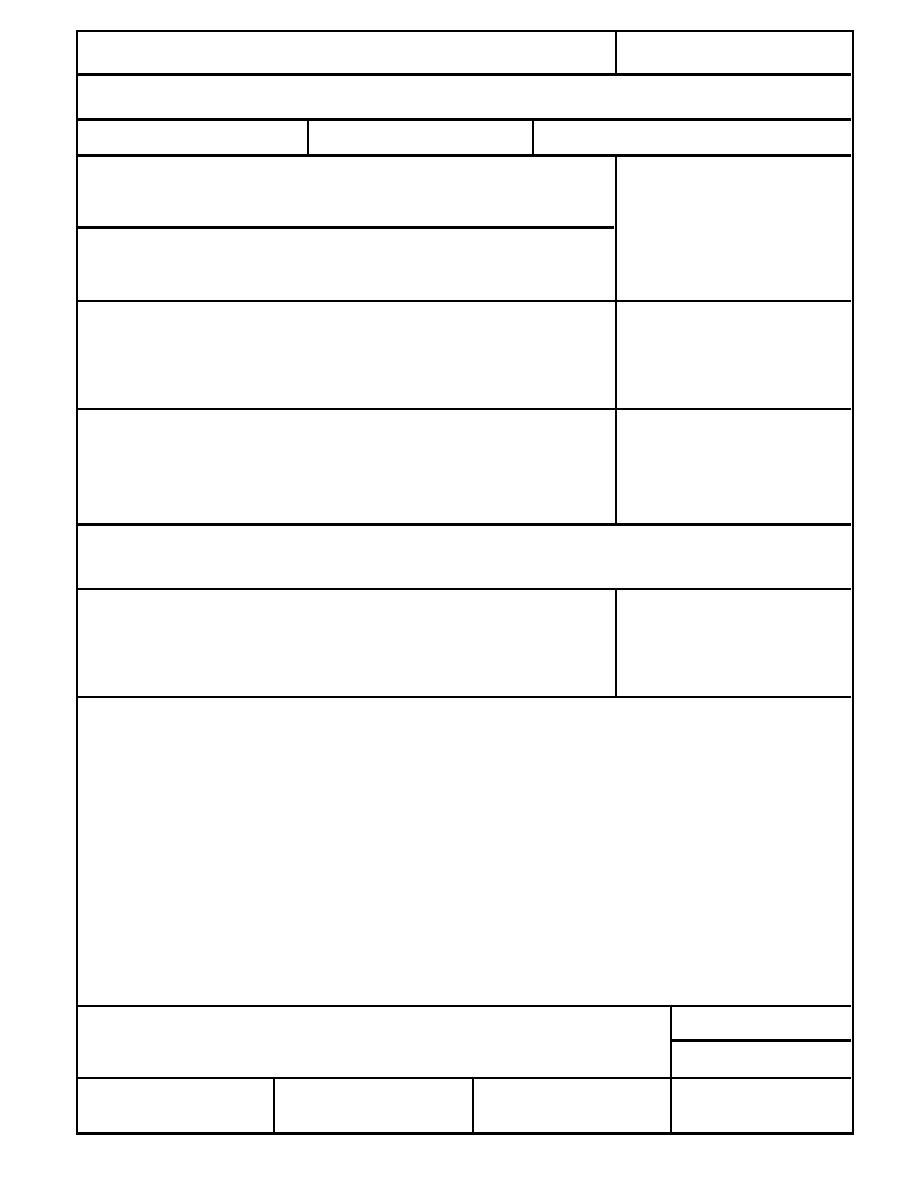
Form Approved
REPORT DOCUMENTATION PAGE
OMB No. 0704-0188
Public reporting burden for this collection of information is estimated to average 1 hour per response, including the time for reviewing instructions, searching existing data sources, gathering and
maintaining the data needed, and completing and reviewing the collection of information. Send comments regarding this burden estimate or any other aspect of this collection of information,
including suggestion for reducing this burden, to Washington Headquarters Services, Directorate for Information Operations and Reports, 1215 Jefferson Davis Highway, Suite 1204, Arlington,
VA 22202-4302, and to the Office of Management and Budget, Paperwork Reduction Project (0704-0188), Washington, DC 20503.
1. AGENCY USE ONLY (Leave blank)
2. REPORT DATE
3. REPORT TYPE AND DATES COVERED
December 1997
4. TITLE AND SUBTITLE
5. FUNDING NUMBERS
A Review of Sintering in Seasonal Snow
PR: 4A161102AT24
6. AUTHORS
WP: 127
Samuel C. Colbeck
WU: SC-S01
7. PERFORMING ORGANIZATION NAME(S) AND ADDRESS(ES)
8. PERFORMING ORGANIZATION
REPORT NUMBER
U.S. Army Cold Regions Research and Engineering Laboratory
72 Lyme Road
CRREL Report 97-10
Hanover, New Hampshire 03755-1290
9. SPONSORING/MONITORING AGENCY NAME(S) AND ADDRESS(ES)
10. SPONSORING/MONITORING
AGENCY REPORT NUMBER
Office of the Chief of Engineers
Washington, D.C. 210314-1000
11. SUPPLEMENTARY NOTES
For conversion of SI units to non-SI units of measurement, consult ASTM Standard E380-93, Standard Practice for Use of the
International System of Units, published by the American Society for Testing and Materials, 1916 Race St., Philadelphia, Pa.
19103.
12a. DISTRIBUTION/AVAILABILITY STATEMENT
12b. DISTRIBUTION CODE
Approved for public release; distribution is unlimited.
Available from NTIS, Springfield, Virginia 22161
13. ABSTRACT (Maximum 200 words)
Strength and electrical pathways develop in snow as bonds grow among grains. Strong ice-to-ice bonds form in
wet snow at low liquid contents but not in highly saturated wet snow. In freely draining wet snow, grain
clusters form, and these require a certain configuration among the three phases of water. This depends
somewhat on the number of grains in the cluster, but always leads to bonding. In dry snow, bonds form more
slowly, but considerable strength can develop as long as rounded grains develop. The rate of bond growth is
probably controlled by the temperature gradient, because both grains and bonds are observed to grow very
slowly in dry snow in the absence of a temperature gradient. The basic shape of the bonds is dictated by the
geometrical requirements of grain-boundary grooves and is not a simple concave neck. In dry snow, this shape,
and possibly the processes, have been misunderstood.
14. SUBJECT TERMS
15. NUMBER OF PAGES
18
Dry snow
Snow
16. PRICE CODE
17. SECURITY CLASSIFICATION
18. SECURITY CLASSIFICATION
19. SECURITY CLASSIFICATION
20. LIMITATION OF ABSTRACT
OF REPORT
OF THIS PAGE
OF ABSTRACT
UNCLASSIFIED
UNCLASSIFIED
UNCLASSIFIED
UL
Standard Form 298 (Rev. 2-89)
NSN 7540-01-280-5500
Prescribed by ANSI Std. Z39-18
298-102



 Previous Page
Previous Page
